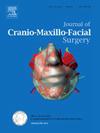Quantitative assessment of temporomandibular disc and ligament changes in temporomandibular joint disorder using magnetic resonance T2 mapping
IF 2.1
2区 医学
Q2 DENTISTRY, ORAL SURGERY & MEDICINE
引用次数: 0
Abstract
Objective
This study aims to quantitatively assess microstructural and biochemical changes in the articular disc and periarticular ligaments associated with temporomandibular joint disorder (TMD) using magnetic resonance T2 mapping, and examines the potential utility of this imaging modality in disease monitoring.
Methods
A prospective cohort study was conducted involving 127 patients diagnosed with TMD and 51 asymptomatic controls, recruited at the hospital between June 2023 and January 2024. All patients underwent magnetic resonance imaging of the temporomandibular joint, including T2 mapping sequences. Image interpretation was independently performed by two radiologists blinded to clinical data. Cases were categorized based on the presence and severity of anterior disc displacement and associated tissue injury. Regions of interest were manually delineated on pseudo-color T2 maps in both open- and closed-mouth positions to obtain T2 relaxation values of the articular disc and periarticular ligaments. Comparative and correlation analyses were conducted using appropriate statistical techniques.
Results
Among patients with TMD, T2 values in the posterior portion of the articular disc were significantly higher than those in the anterior segment (p < 0.01), a finding not observed in the control group. Although no significant difference in disc T2 values was noted between open- and closed-mouth positions within each group, periarticular ligament T2 values differed significantly between these positions (p < 0.05). Both disc and periarticular ligament T2 values were significantly elevated in the TMD group compared to controls (p < 0.05). In the closed-mouth position, T2 values of both disc and periarticular ligaments demonstrated a positive correlation with increasing grades of anterior disc displacement and severity of tissue injury (p < 0.01).
Conclusion
T2 relaxation values increased with the progression of anterior disc displacement and tissue injury during early to intermediate stages of TMD, followed by a decline in later stages. A positive correlation was identified between T2 values of the articular disc and periarticular ligaments. T2 mapping in both open- and closed-mouth positions provided quantitative insight into structural changes of temporomandibular joint components and may serve as a valuable imaging biomarker for assessing tissue integrity and monitoring disease progression in TMD.
磁共振T2成像定量评价颞下颌关节紊乱患者颞下颌盘及韧带的变化。
目的:本研究旨在利用磁共振T2成像定量评估与颞下颌关节紊乱(TMD)相关的关节盘和关节周围韧带的显微结构和生化变化,并探讨这种成像方式在疾病监测中的潜在效用。方法:对2023年6月至2024年1月在该医院招募的127例TMD患者和51例无症状对照者进行前瞻性队列研究。所有患者都接受了颞下颌关节的磁共振成像,包括T2定位序列。影像判读由两名不了解临床资料的放射科医生独立完成。根据前椎间盘移位和相关组织损伤的存在和严重程度对病例进行分类。在张嘴和闭口位置的伪彩色T2图上手动划定感兴趣的区域,以获得关节盘和关节周围韧带的T2松弛值。采用适当的统计技术进行比较和相关分析。结果:TMD患者关节盘后段T2值明显高于前段T2值(p)。结论:TMD早期至中期,T2松弛值随着椎间盘前段移位和组织损伤的进展而升高,后期有所下降。关节盘的T2值与关节周围韧带呈正相关。在张嘴和闭口位置下的T2定位提供了对颞下颌关节成分结构变化的定量洞察,并可能作为评估组织完整性和监测TMD疾病进展的有价值的成像生物标志物。
本文章由计算机程序翻译,如有差异,请以英文原文为准。
求助全文
约1分钟内获得全文
求助全文
来源期刊
CiteScore
5.20
自引率
22.60%
发文量
117
审稿时长
70 days
期刊介绍:
The Journal of Cranio-Maxillofacial Surgery publishes articles covering all aspects of surgery of the head, face and jaw. Specific topics covered recently have included:
• Distraction osteogenesis
• Synthetic bone substitutes
• Fibroblast growth factors
• Fetal wound healing
• Skull base surgery
• Computer-assisted surgery
• Vascularized bone grafts

 求助内容:
求助内容: 应助结果提醒方式:
应助结果提醒方式:


